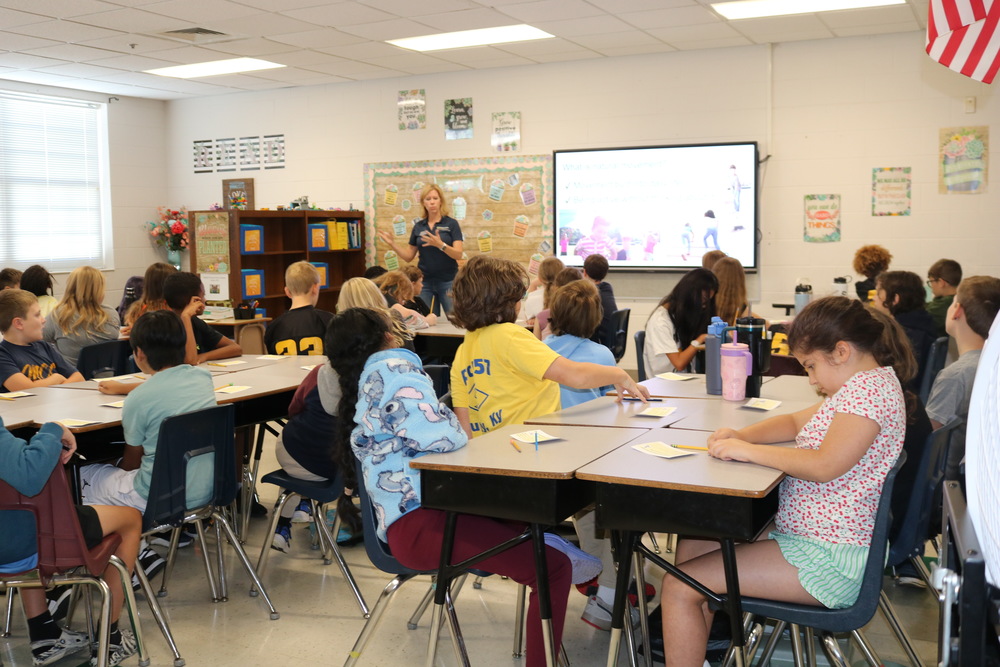Murray Middle School fifth grade students are participating in The Community Vitality Childhood Education Project. A collaboration project with Murray State University’s interdisciplinary Community Vitality team that includes faculty and students from multiple programs including Nursing, Psychology, Exercise Science, Nutrition, and Occupational Safety and Health. Ultimately, the Community Vitality Childhood Education Project serves as both an educational experience for elementary or middle school students and a research initiative to explore how introducing Blue Zones principles in childhood can support long-term health and community well-being.
Murray Middle School fifth-grade students are introduced to the principles of the Blue Zones, which are regions of the world where people live the longest and healthiest lives. By focusing on the “Power 9” habits identified in these communities, the project aims to teach children simple, age-appropriate practices that promote physical health, emotional well-being, and stronger social connections. Through interactive lessons and activities, students learn how lifestyle choices such as moving naturally, eating wisely, managing stress, and fostering belonging can contribute to a healthier and happier life. This program not only builds knowledge but also inspires positive behavior changes at an early age. By incorporating pre- and post-tests, the project evaluates what students learn and how their attitudes toward health and community may shift.
Amelia Dodd, PT, DPT, Murray State University Assistant Dean/Professor Exercise Science, said the MMS fifth grade group is their inaugural group. “We greatly appreciate the support of Mrs. Stubblefield, the MMS principal, and the fifth-grade teachers,” she said. “The students have been very engaged and interactive. We hope we can continue this program in other schools and age groups in the region.”
The five main mission components introduced students include, Promote awareness of healthy lifestyle practices (movement, diet, stress management, and social connection) through interactive lessons and age-appropriate activities. Encourage the adoption of simple, practical behaviors (such as eating more plants, moving naturally, practicing gratitude, and connecting with others) that can enhance well-being and community vitality. Foster a sense of purpose and belonging among students by linking personal choices to positive effects on themselves, their families, and their communities. Evaluate student learning and behavioral intentions through pre- and post-assessments to measure knowledge gained and potential lifestyle changes inspired by the program.

